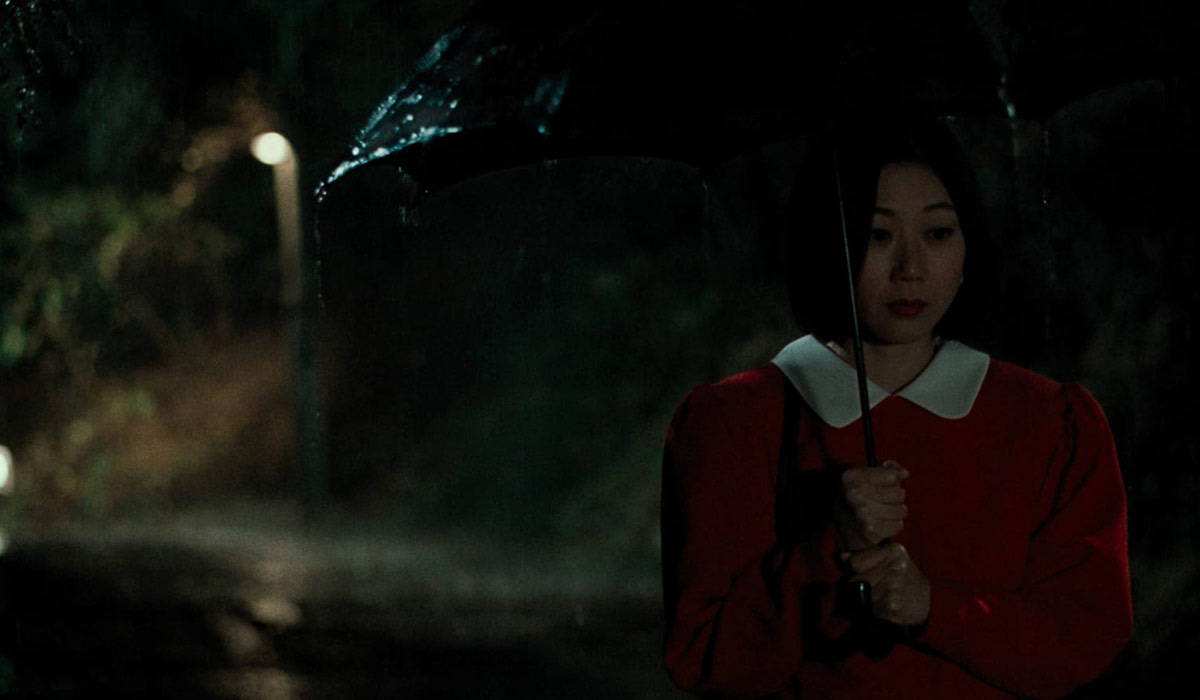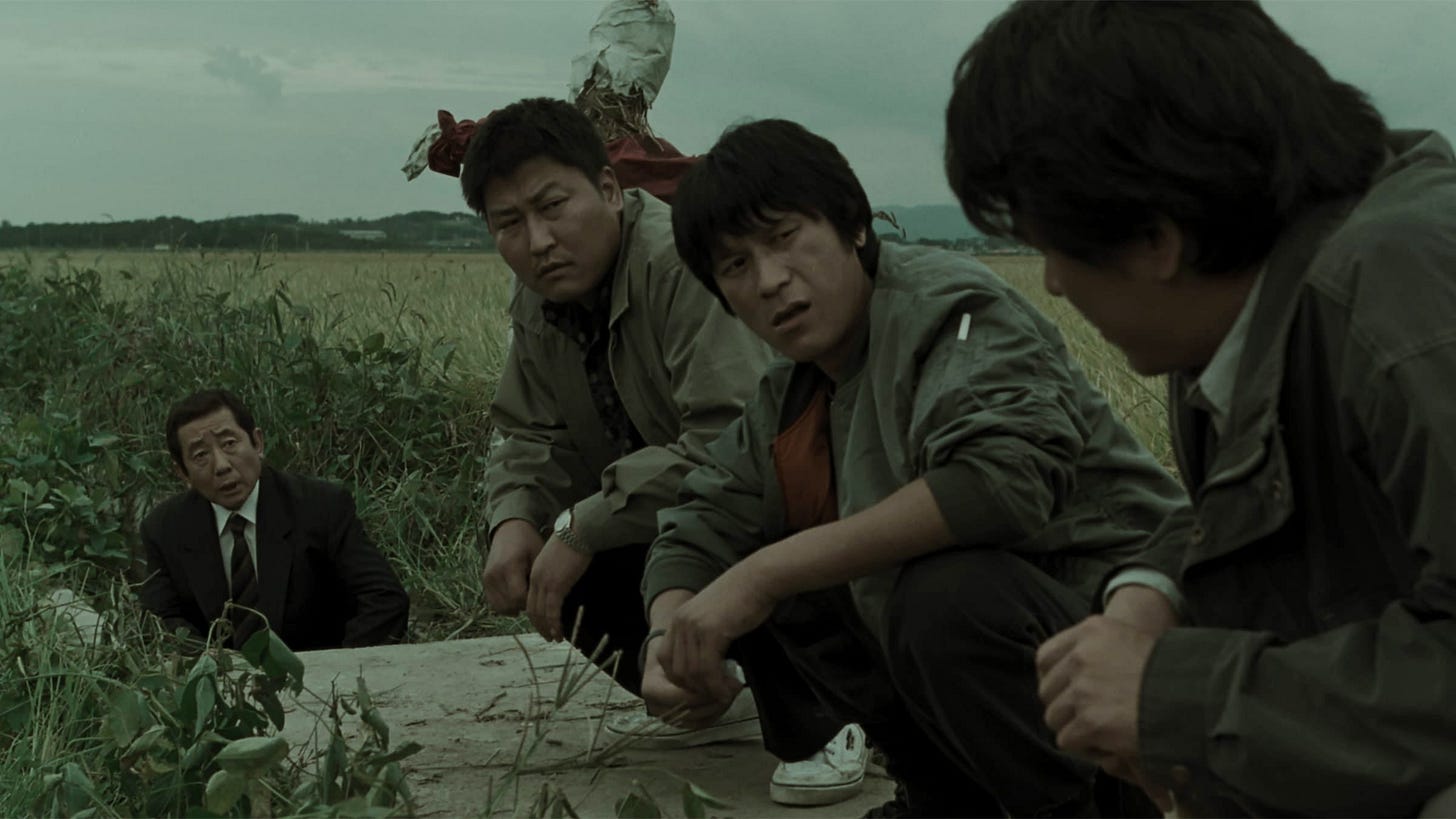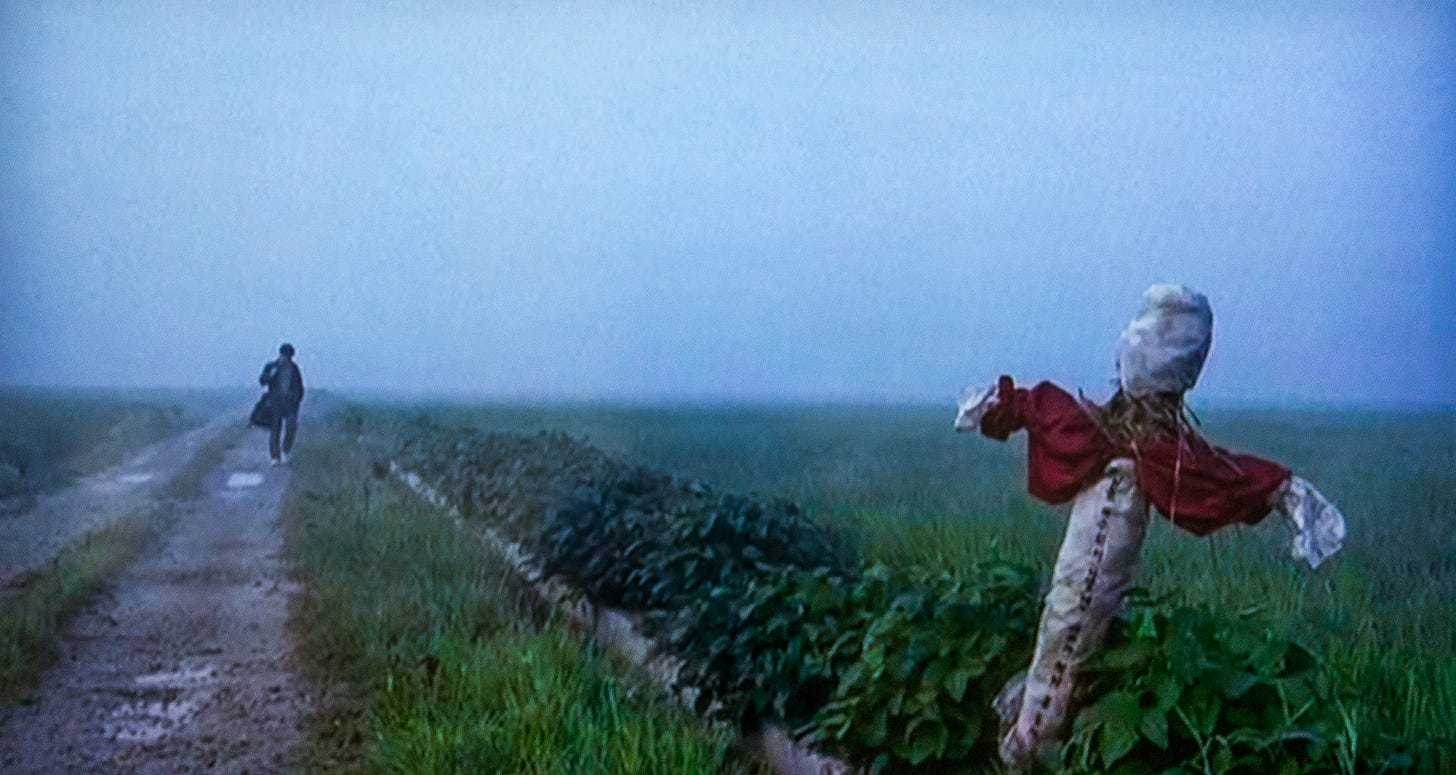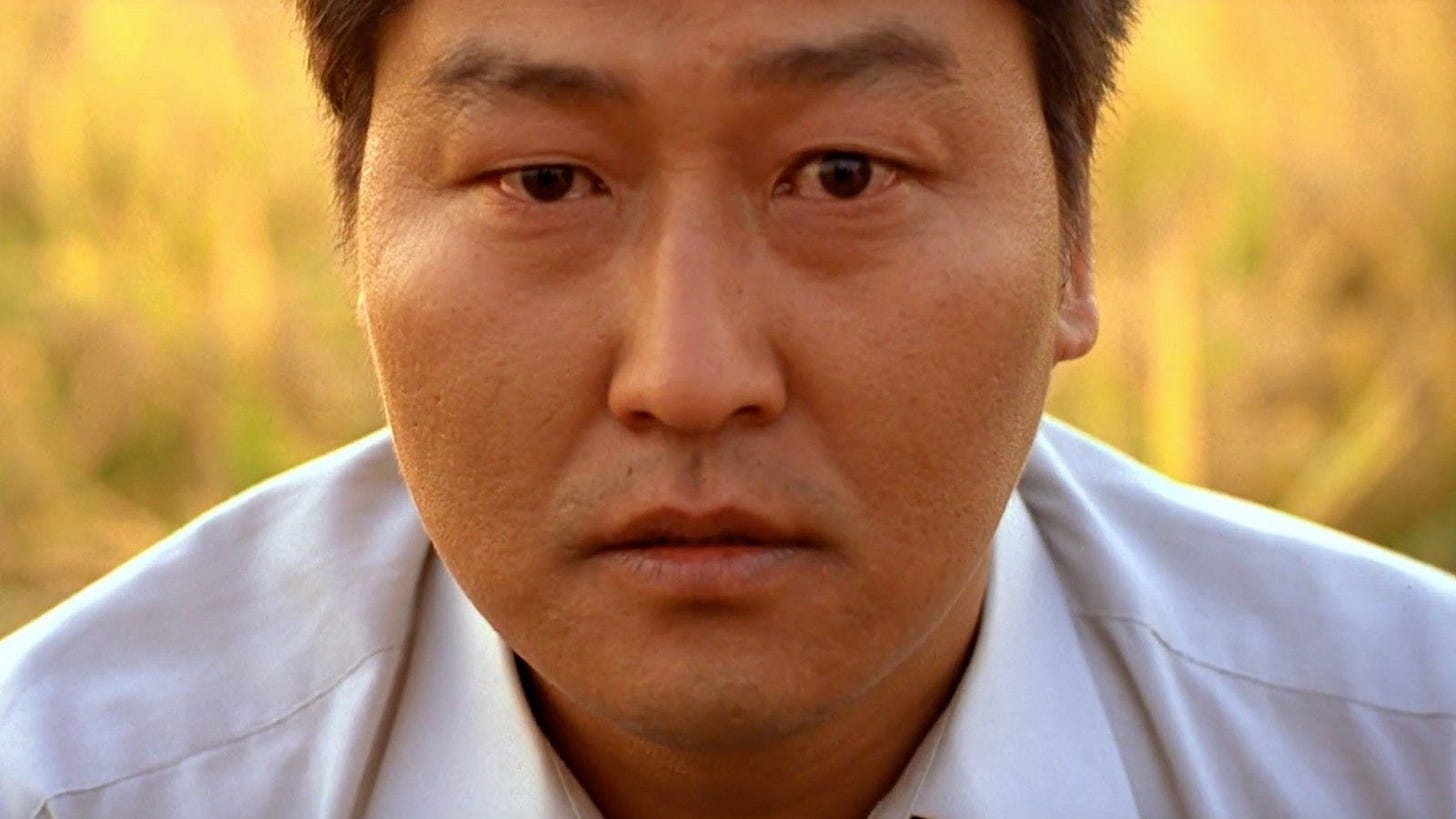Spoilers for Memories of Murder (2003). Trigger warnings for discussion of sexual assault.
Before he was an Oscar-winning household name, Bong Joon-ho directed Memories of Murder. A taut thriller, based on the Hwaseong Serial Murders; a series of sexual assaults and murders that took place in Hwaseong in the late 1980s. Widely reported to be South Korea’s first serial killer, the perpetrator wasn’t caught until more than 15 years after the film’s release.
At the time of the killings, South Korea was undergoing a period of political upheaval. In the thirty years since fighting stopped in the Korean War (no peace treaty was ever signed, so the two countries technically remain at war), South Korea had seen uprisings, two military coups and was ruled under martial law.
Corruption and a willingness to torture suspects to get convictions are shown to hinder the investigation and were widespread throughout South Korea, leading to the death of student activist Park Jong-chul just a year after the events of the film, the reported suicides of four suspects in the real-life case and the arrest of investigators when the killer was finally apprehended.
However, Joon-ho highlights that the main issue throughout is that South Korean law enforcement had no idea what they were dealing with. Having never investigated a serial killer before and lacking the technology or know-how to process evidence and narrow down the suspect list, our detectives revert to tried and tested methods which allow the killer to out-manoeuvre them at every turn.
Song Kang-ho plays the lead detective, Park Doo-man, who believes he can identify guilty parties through eye contact alone. His partner, Cho Yong-koo (Kim Roi-ha), is quick to anger and prefers to beat confessions out of suspects. They are joined by Seo Tae-yoon (Kim Sang-kyung), a detective from Seoul, who is better trained but still woefully unprepared to deal with the murderer.
Not only is a serial killer unknown to the police force. It’s an unknown situation for the population and this leads to them enshrining him into folklore. The killer is something closer to a monster, a demon. Later in the film, a suspect explains a mysterious person rises out of the outhouses in a local school – a story repeated by two local schoolgirls. This image wouldn’t be out of place in any number of Asian ghost stories.
In one pivotal, and terrifying scene, Joon-ho emphasises the inhuman nature of the killer. A young woman is called out on a rainy night. As she walks, singing the song Sad Letter (which the killer has requested on a local radio station every time they strike), she illuminates her route with a torch, but the path is surrounded by rice paddies. The long reeds obscuring what’s hidden within.
She stops. She hears someone whistling along with her as she sings. She turns, illuminating the paddies with her torch, missing what the audience might catch – a figure, ducking in and out between the reeds. Joon-ho ratchets up the tension; the killer getting closer to the victim, the whistling getting louder. She’s close to a large gypsum factory but already we know she won’t make it. Like the best creatures in folklore, once you’re away of their presence, it is already too late.
The young woman readies herself and makes a dash for the factory. The killer matches her pace, the reeds moving in the background as he pushes through them. The scene ends with a jarring freeze frame; the killer emerging from the reeds on all four, screaming at the young woman. It’s a terrifying, animalistic image. Distorted by the killer’s movement and the low light to create something uncanny.
That feeling of the unknown is emphasised by how unlike the rest of the film this scene is. Bong Joon-ho is a master of sudden shifts in tone. Memories of Murder, while tense and disturbing in parts, is often more of a satirical black comedy. The inept police force resorting to karate kicks when the right answer isn’t in front of them, or sat in bars, simultaneously abusing their power for free food and drink while failing completely to protect those around them.
But the scene shows how quickly unbelievable actions are attributed to unbelievable beings. The population and the police force are unwilling to accept that a simple man could be capable of these acts. The one time we see the killer, Joon-ho manipulates the scene so that we see a horror-movie monster instead of a normal-looking Korean citizen. He manipulates the audience's perception to feed that narrative of the unknown.
The audience would get closure. Lee Choon-jae, who was already serving a life sentence for rape and murder, and had been linked to the crimes during the initial investigation, would be questioned in 2019 after DNA identification and ultimately confess to many more assaults. This finality is never given to the characters. The Hwaseong serial killer remains a monster to them, his power unabated.
In the final moments of the film, having left the police force to set up his own business, Park Doo-man comes across the scene of the first murder. He kneels in front of the drainage pipe and looks inside when a little girl approaches and tells him that another man had been there before. Doo-man asks her what this man looks like. ‘Ordinary’, she responds, and Doo-man looks stunned, staring directly at the camera.
Joon-ho would explain that Doo-man does this because the director believed that the killer, still uncaught, would see the film. He wanted the detective to make eye contact with him. Another reading is that Doo-man still can’t believe that an ordinary man could commit these crimes. He stares at the audience, questioning whether any of us could be the monster.
Having witnessed the chase through the rice paddies, it’s not hard to imagine why.
Director: Bong Joon-ho
Writers: Bong Joon-ho and Shim Sung-bo (based on the play Come to See Me, by Kim Kwang-rim)
Starring: Song Kang-ho, Kim Sang-kyung, Kim Roi-ha, Park Hae-il, Byun Hee-bong










